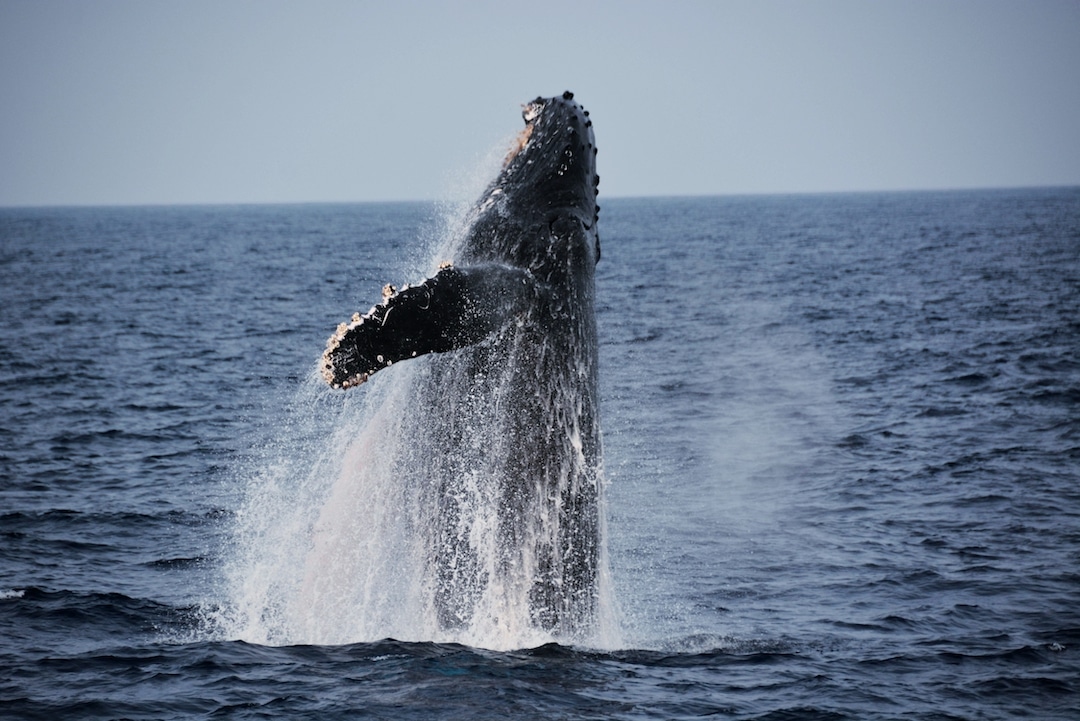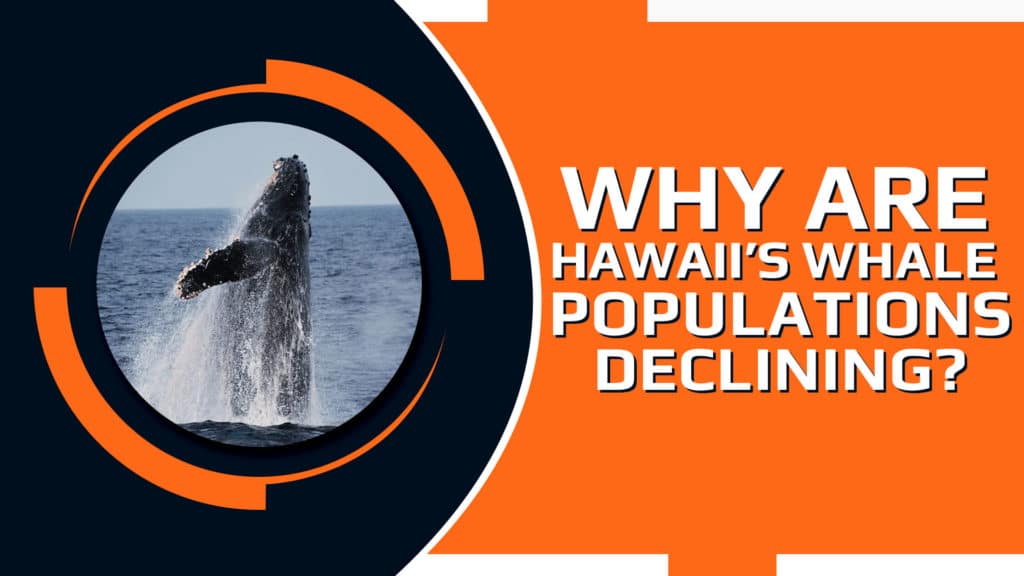10 Facts About Spinner Dolphins
Seeing whales on a whale watch tour is awesome. No doubt about that. But do you know what else is awesome? Seeing dolphins! But is it legal to swim wi...

In an upcoming article scheduled for release in the journal “Royal Society Open Science” titled “Fluctuating reproductive rates in Hawaii’s humpback whales, Megaptera novaeangliae, reflect recent climate anomalies in the North Pacific”, Rachel Cartwright of California State University Channel Islands and The Keiki Kohola Project, lays out a terrifying vision for the future of the North Pacific humpback whale (the whales that visit Hawaii every winter) with her research on current developments in humpback whale population. The study covers the years 2008 - 2018. From Miss Cartwright’s report:
(Whale) (e)ncounter rates were assessed during transect surveys of the Au’Au Channel, Maui, Hawaii. Initially rates increased, tracking projected growth rates for this population segment. Rates reached a peak in 2013, then declined through 2018. Specifically, between 2013 and 2018, mother-calf encounter rates dropped by 76.5%, suggesting a rapid reduction in the reproductive rate of the newly designated Hawaii Distinct Population Segment of humpback whales during this time.
To recap that in bold “... between 2013 and 2018, mother-calf encounter rates dropped by 76.5%...”. That decrease in baby whale sightings is staggering. Should those rates continue to drop, we may reach a point where the whales cease to exist.
Though the numbers seem to speak for themselves, Cartwright cautions that it may not be there are fewer whale calves, but the issue could be the whales are not being seen and counted. It’s possible the calves are hanging out around remote islands away from Maui that are difficult to survey due to ocean conditions. Still, this is most likely a case of wishful thinking and most scientists are working off the theory that the whales are, in fact, disappearing.

OK, so if the whales in Maui are disappearing, the question is why. While there’s no definitive answer, there are many theories floating around the scientific world. Miss Cartwright’s research, though, leads her to believe that the main culprit is climate change.
… the biological impacts of climate change on marine systems are becoming increasingly widespread. Within the marine realm, changes in ocean temperature and ocean chemistry are generally recognized as the primary direct consequences of climate change, however mounting evidence indicates that the fundamental processes which support marine systems are also being impacted.
While warming warmers are an issue in Hawaii, the bigger problem for the whales stems from the warming waters up north, where the humpbacks spend their summers digesting enough food to make the long journey to Hawaii in the winter (the whales do not feed while in Hawaii). There was a recently documented krill (shrimp) die-off in Antarctica. It’s believed something similar is happening in the North Pacific humpback whales’ feeding grounds.
Feeding grounds used by the Hawaii DPS include coastal regions of Northern British Columbia, South-east Alaska, Prince William Sound, coastal regions of the Northern Gulf of Alaska and portions of South-west Alaska. Collectively > 80% of the Hawaii DPS head to these areas and typically whales display a high degree of site fidelity between years. Across these areas, sightings of mother-calf pairs have declined steeply over the last five years. In Glacier Bay, South East Alaska… (d)eclines began in 2014; in 2016, park observers reported the lowest crude birth-rate since studies began in 1986 and in 2017, the crude birth rate was the second lowest on record, with only 2 calves sighted through the entire summer. Preliminary results from a survey covering a broader area of South-east Alaska during the summer of 2017 documented only 3 calf sightings and further north in Prince William Sound, South-west Alaska, no calves have been sighted since 2015.
The North Pacific humpback whale was de-listed from the Endangered Species Act in Hawaii’s waters in 2016. Only with scientific research presented by people like Rachel Cartwright will there be the data necessary to convince the government to take action to protect the whales.
Hawaii Ocean Project is proud to support scientific researchers with our 100% Research Direct program. Since Hawaii Ocean Project’s inception, we have directly contributed over $90,000 to scientific marine life investigation, and we continue to cultivate the relationships we have established with these well-respected marine researchers.
We do this to ensure that legitimate scientists receive the funds they need to conduct research to understand Hawaii’s marine environment.
Our 100% Research Direct Program is a voluntary program whereby guests can donate to scientific researchers who are currently studying marine life and publishing peer-reviewed papers. 100% of all money donated to this Research Direct Program goes to the science professionals. It is our guarantee that none will go towards director salaries, or, administrative fees. One hundred percent of all gift shop profits, from each HOP excursion are also donated to Research Direct.
(Image by Hawaii Ocean Project whale watch rider John Brandon)
Seeing whales on a whale watch tour is awesome. No doubt about that. But do you know what else is awesome? Seeing dolphins! But is it legal to swim wi...
Last week, it was announced that the Department of Natural Land and Resources are going to put trash-collecting Seabins into the notoriously pollute...
The world's coral reefs are dying. In Hawaii, where many people rely on the ocean for their livelihoods (yes, we're raising our hands), this is a sc...
